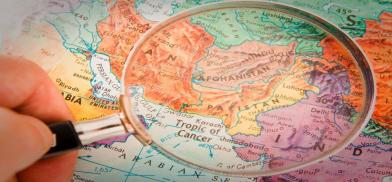Better connectivity will bring economic benefits to South Asian region
Most parts of South Asia, including the Maldives, Nepal, Pakistan, Bangladesh, Bhutan, India, Sri Lanka, and Afghanistan, lack regional connectivity

Most parts of South Asia, including the Maldives, Nepal, Pakistan, Bangladesh, Bhutan, India, Sri Lanka, and Afghanistan, lack regional connectivity. Despite sharing geographical proximity they are not integrated and their linkages are totally inadequate for modern requirements as compared to other regions.
The region needs to be integrated with the aim to promote trade relationships and to ensure face-to-face contact between people, who once lived as neighbors before political boundaries were carved out. South Asia remains well below its potential at five percent of the region’s global trade, according to an Asian Development Bank report and this makes the region one of the most disconnected regions in the world, especially when compared with other regions such as East Asia and the Pacific, where intra-regional trade accounts for approximately 50 percent of the total trade.
A prosperous and more developed South Asian region can be created through trade promotion, and which will help the region in creating better employment opportunities. Economic growth will also help in playing a major role in bridging the trust deficit.
Apart from trade promotion, regional integration in South Asia has impacted several areas such as energy, water, transport, and climatic conditions. Increased connectivity will also help in realizing the vast socio-economic benefits within the region. This will be enhanced through greater regional cooperation amongst the South Asian region members.
Multilateral and bilateral funding agencies think tanks and research organizations, national and state governments, and community groups also play a significant role in enhancing better cooperation from the grassroots to the top-level administrative units.
BRI and its impact
The Belt and Road Initiative (BRI) is a multi-billion dollar, transcontinental project initiated by the Chinese government . In 2017, when the first BRI meeting was held Bangladesh, India, Myanmar and China established a good connection amongst themselves. However, in the second meeting held in 2019, there were some missing links as some countries had withdrawn from the project over constructing the economic corridor. For instance, India has been opposing the CPEC (China–Pakistan Economic Corridor), a flagship of the BRI, which passes through Pakistan-occupied Kashmir. A 2800-km BCIMEC (Bangladesh, China, India, Myanmar Economic Corridor) the proposed project was to link Yunnan province of China, with Kolkata in India via Mandalay in Myanmar and Dhaka in Bangladesh. This route would have ensured that China would gain access to the Indian Ocean. This forced the Indian government to oppose the BRI because it suspects the Chinese government's initiatives.
Moreover, several countries have also realised the risks inherent in BRI. Malaysia, Myanmar, Pakistan, Sierra Leone, and Kyrgyzstan, to name a few, had canceled, downsized, or postponed many key BRI projects.
ASEAN as an example
The 11 Southeast Asian countries - Thailand, Vietnam, The Philippines, Malaysia, Laos, Indonesia, Singapore, Brunei, Burma (Myanmar), Cambodia, and Timor-Leste - are the founder members of an intergovernmental organization that is ASEAN (Association of Southeast Asian Nations). These countries can collectively work towards a common goal through this organization despite the high population rates. Due to the high GDP, the ASEAN has fronted peaceful negotiations among the Asia-Pacific nations and formed one of the world’s largest free trade blocs. Besides, it has allowed the signing of six free trade agreements with other trading regions. The organization has also helped in promoting economic, social, and political stabilization. Mutual respect for one another and non-interference in other countries’ affairs have also been seen.
With the ASEAN as an exemplary pillar, regional security challenges such as narcotics trafficking, human trafficking, food insecurities, terrorism, and refugee flows have shown signs of improvement. The organization has continuously grown to benefit the entire Asian continent. Even after the coronavirus outbreak, the ASEAN members established several mechanisms to procure medical supplies, coordinated the economic recovery plans, and tried to enhance the safe resumption of regional travel.
A majority of countries in South Asia have a higher probability of remaining integrated. However, this can only happen after most of the problems within the region have been solved, which can take a long time.
Climate change is another rising global issue. However, countries can work together in the region to improve the situation by adopting efficient and better ways of conserving the environment.
In the South Asian region, as with the rest of the world, new technological developments are taking place. The advancements in communication technology have helped many countries improve their productivity and thus improve connectivity with each other.
(The writer studies at the Graduate School of Chulalongkorn University, Bangkok, Thailand and is a contributor to Bangladesh media. The views are personal. He can be contacted at safenroy@gmail.com)










Post a Comment